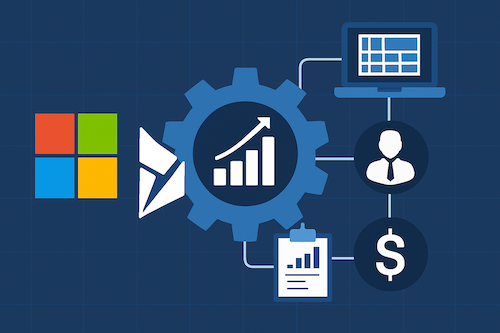
Table of Contents
Microsoft Dynamics 365 Finance & Operations (often abbreviated as D365 F&O) has carved out a significant space in the Tier 1 cloud ERP landscape. It’s not just another financial system; it represents a comprehensive platform designed for large, complex enterprises aiming for substantial digital transformation. My observations across numerous system evaluations suggest its increasing adoption is driven by more than just feature sets. Instead, it’s the architectural sophistication and ecosystem integration that truly differentiate this platform.
The Microsoft Ecosystem Advantage
What truly sets D365 F&O apart for many organizations? It’s the deep integration within the broader Microsoft ecosystem. This isn’t merely a talking point. The system’s native leveraging of Azure services provides a robust, scalable, and globally available foundation that extends beyond traditional ERP boundaries. Furthermore, its synergy with the Power Platform (Power BI, Power Apps, Power Automate) and Dataverse unlocks considerable potential for customization, process automation, and advanced analytics without the traditional heavy lift of bespoke development.
Insights distilled from numerous complex system deployments indicate that this ecosystem approach is a powerful enabler for businesses looking to build agile and data-driven operations. The platform’s integration with Microsoft Teams for collaboration, SharePoint for document management, and Azure DevOps for application lifecycle management creates a unified digital workspace that many competitors struggle to match.
Beyond Financial Management
While “Finance” is in its name, D365 F&O extends far beyond traditional accounting functions. Its capabilities in areas such as Supply Chain Management, Manufacturing, and Commerce are integral to its value proposition:
- Supply Chain Management: Offers sophisticated tools for planning, logistics, warehouse management, and procurement, crucial for global operations with complex distribution networks.
- Manufacturing: Supports various modes, including discrete, process, and lean manufacturing, providing end-to-end visibility with advanced planning optimization algorithms.
This breadth allows organizations to pursue a unified platform strategy, potentially reducing the complexity and cost associated with managing a patchwork of disparate systems. A perspective forged through years of navigating real-world enterprise integrations suggests that such unification, when strategically executed, can yield significant operational efficiencies and improved decision-making velocity.
Architectural Flexibility and Industry Adaptation
The platform’s inherent flexibility, amplified by the Power Platform, allows it to be tailored to specific industry needs without compromising core system integrity. We’ve seen it gain strong traction in manufacturing, retail, distribution, and professional services. The ability to rapidly develop and deploy custom applications or automate unique workflows using low-code tools is a compelling factor for businesses operating in dynamic environments.
However, this level of adaptability also necessitates robust governance to manage customizations and ensure long-term maintainability (a common theme in any powerful enterprise system deployment). The challenge lies in balancing innovation with standardization, particularly in multi-entity organizations where consistent processes matter.
Strategic Evaluation Considerations
For enterprises evaluating D365 F&O, the considerations extend beyond a simple feature-to-feature comparison with other ERPs like SAP S/4HANA or Oracle Fusion Cloud. Longitudinal data and field-tested perspectives highlight that the strategic fit with an organization’s existing Microsoft investments, its cloud strategy (particularly concerning Azure), and its appetite for leveraging the Power Platform for innovation often become key decision drivers.
The platform’s strength in handling complex financial consolidations, multi-currency operations, and regulatory compliance requirements makes it particularly attractive for multinational corporations. Its built-in analytics capabilities, enhanced by integration with Azure Machine Learning services, provide sophisticated forecasting and planning tools that many organizations find compelling.
Implementation success, as with any major ERP, hinges on clear strategic objectives, strong project governance, and effective change management. The potential is vast, but so is the need for careful planning around data migration strategies, user training programs, and integration with existing systems.
Looking Forward
Ultimately, D365 F&O presents itself as more than an ERP; it’s a strategic pillar capable of supporting significant business transformation. Its strength lies in its comprehensive scope, its deep integration with Microsoft’s cloud and business application services, and its adaptability to complex enterprise demands. Organizations that can fully leverage this ecosystem approach often find themselves with a competitive advantage in their digital transformation journey.
For further discussion on enterprise systems and digital transformation, feel free to connect with me on LinkedIn.